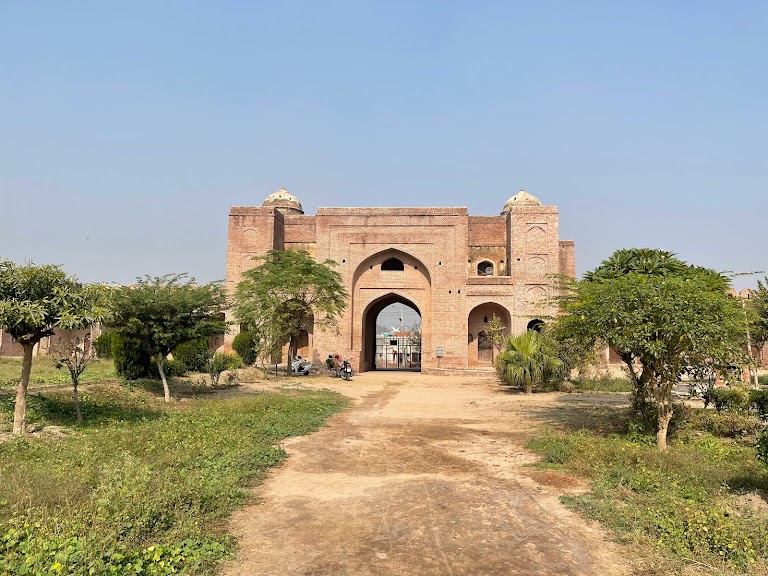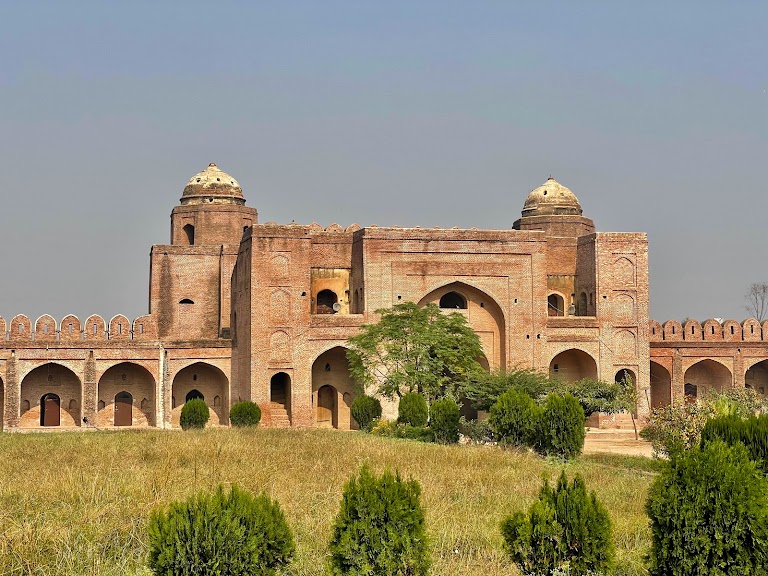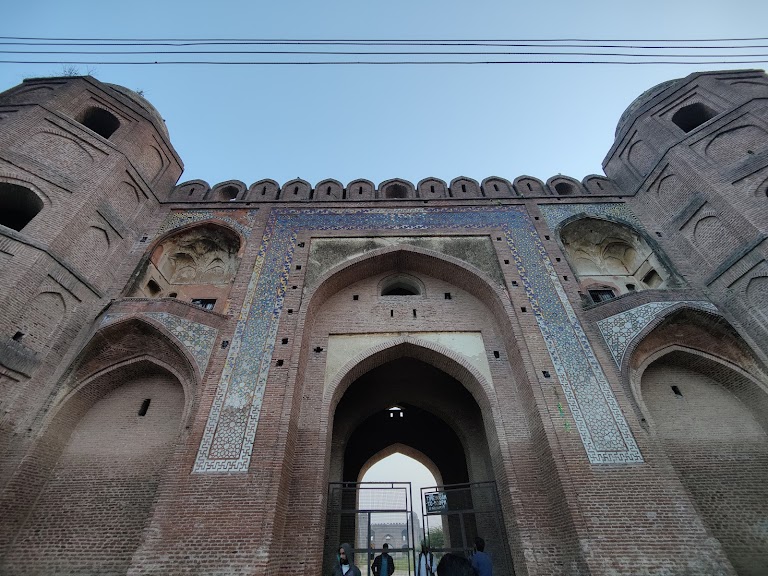


.jpeg)
Nestled in the quiet town of Doraha in Ludhiana District, the Mughal Serai, also known as the Doraha Sarai or Mughal Caravan Serai, stands as a reminder of the opulence and grandeur of the Mughal Empire. Once a bustling hub for Mughal caravans traversing the empire, this historic serai was built under the reign of Emperor Jahangir, offering shelter to traders, travelers, and royalty alike. Today, though the sarai’s majestic walls and structures have weathered the passage of time, it still retains the echoes of its glorious past. A Gateway to the Mughal World Spanning 168 square meters, the Mughal Serai is a magnificent example of the once-ornate Mughal architecture. The serai boasts imposing gateways on its northern and southern sides, which once welcomed caravans from across the empire. The southern gate is adorned with intricate flora and fauna paintings, while the northern gate showcases delicate floral designs, both evoking the artistic excellence that defined the Mughal era. These grand gateways are connected by the Kaccha Pathway, a route that travelers would have walked centuries ago, surrounded by the bustling life of the serai. A Majestic Courtyard of Memories At the heart of the Mughal Serai lies an expansive courtyard, framed by rows of rooms that were once occupied by traders, merchants, and travelers. The northern and southern sides feature 20 rooms each, while the eastern and western wings have 30 rooms. These rooms, designed with slanting ventilators, allowed for ample light and ventilation, reflecting the thoughtful engineering of Mughal architecture. A magnificent suite of three rooms stands out among the others, likely reserved for distinguished guests. The ceilings of these rooms were once adorned with vibrant, lively colors, remnants of which can still be seen, giving a glimpse into the grandeur that once decorated these halls. Ruins of Elegance and Functionality Though much of the Mughal Serai has fallen into disrepair, visitors can still imagine the elegance of its former glory. On the eastern side, remnants of what is believed to be a Hammam (bathing area) add to the sense of royal luxury that once defined this space. The thoughtfully crafted design of the serai allowed for both comfort and function, making it an essential stop for weary travelers on long journeys. Within the western half of the serai stands the ruins of a mosque, its walls once painted in vibrant, lively colors. Though the mosque has now succumbed to the ravages of time, it offers a poignant reminder of the spiritual significance that often accompanied Mughal architecture. Beside the mosque, a one-story structure likely served as the residence of the mullah or caretaker, further illustrating the multi-functional nature of the Mughal Serai. A Monument in Need of Preservation Sadly, despite its historical significance, the Mughal Serai of Doraha has been left to deteriorate, with little effort made to preserve this once-splendid site. The fading walls and crumbling rooms now stand as silent witnesses to the neglect that has taken its toll on this important piece of Punjab’s Mughal heritage. Located just 7-8 km from Lashkari Khan Sarai, the Mughal Serai of Doraha is a must-visit destination for anyone eager to explore the rich, yet often overlooked, history of the Mughal Empire in Punjab. A visit to the Mughal Serai of Doraha is more than just a step back in time; it is an opportunity to witness the once-glorious splendor of Mughal architecture, with its intricate designs, grand gateways, and practical elegance. Despite its current state of disrepair, the Mughal Serai continues to inspire awe and admiration, inviting visitors to imagine the vibrant life that once flourished within its walls.